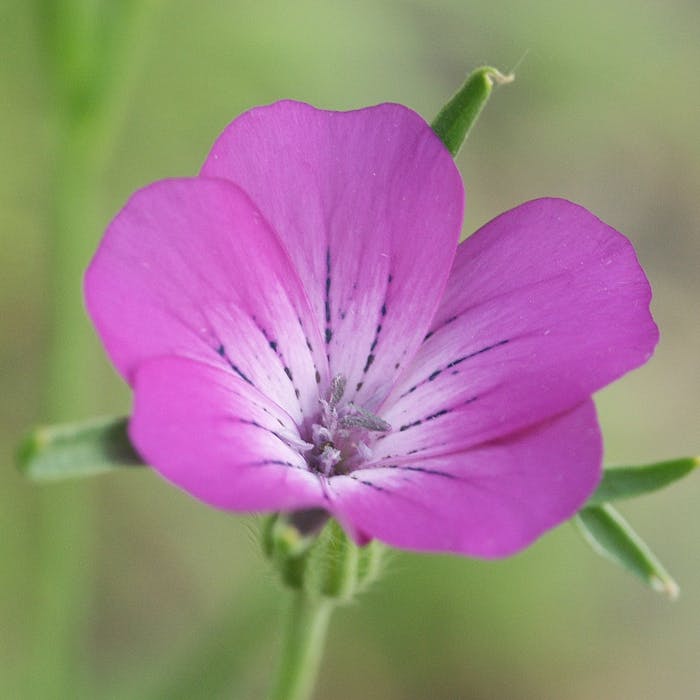
Corncockle - one of our rarest plants
As the name suggest, Corncockle is a plant of cultivated cornfields. Due to changes in farming practices, it has been reduced to just one site in the wild - but is now often sown as part of wildflower seed mixes.
One of our most beautiful wildflowers, this large annual is easily grown and flowers abundantly for weeks in summer. The tall, upright plants are covered in greyish, pointed leaves that are covered in soft hairs. The stems branch to produce an open cluster of flowering stems. The flowers are a delicate soft to deep pink colour, fading to white in the centre. The plant grows to about three-and-a-half feet.
Evidence suggests that the Corncockle was first brought to Britain from Europe by Iron Age farmers, some 2,400 years ago. It was never as common in farmers fields as poppies or corn marigold, but was a serious weed in the 16th century and features in the work of Shakespeare. With the advent of herbicides it began to decline, but its real Achilles heel were its large seeds, which were easily screened from crop seed. It is now exceptionally rare as a cornfield flower, with Plantlife’s Ranscombe Farm reserve being one of the few last known sites.
As with the majority of wild plants, the Corncockle is poisonous if eaten.
Further reading
Links to external websites are not maintained by Bite Sized Britain. They are provided to give users access to additional information. Bite Sized Britain is not responsible for the content of these external websites.
